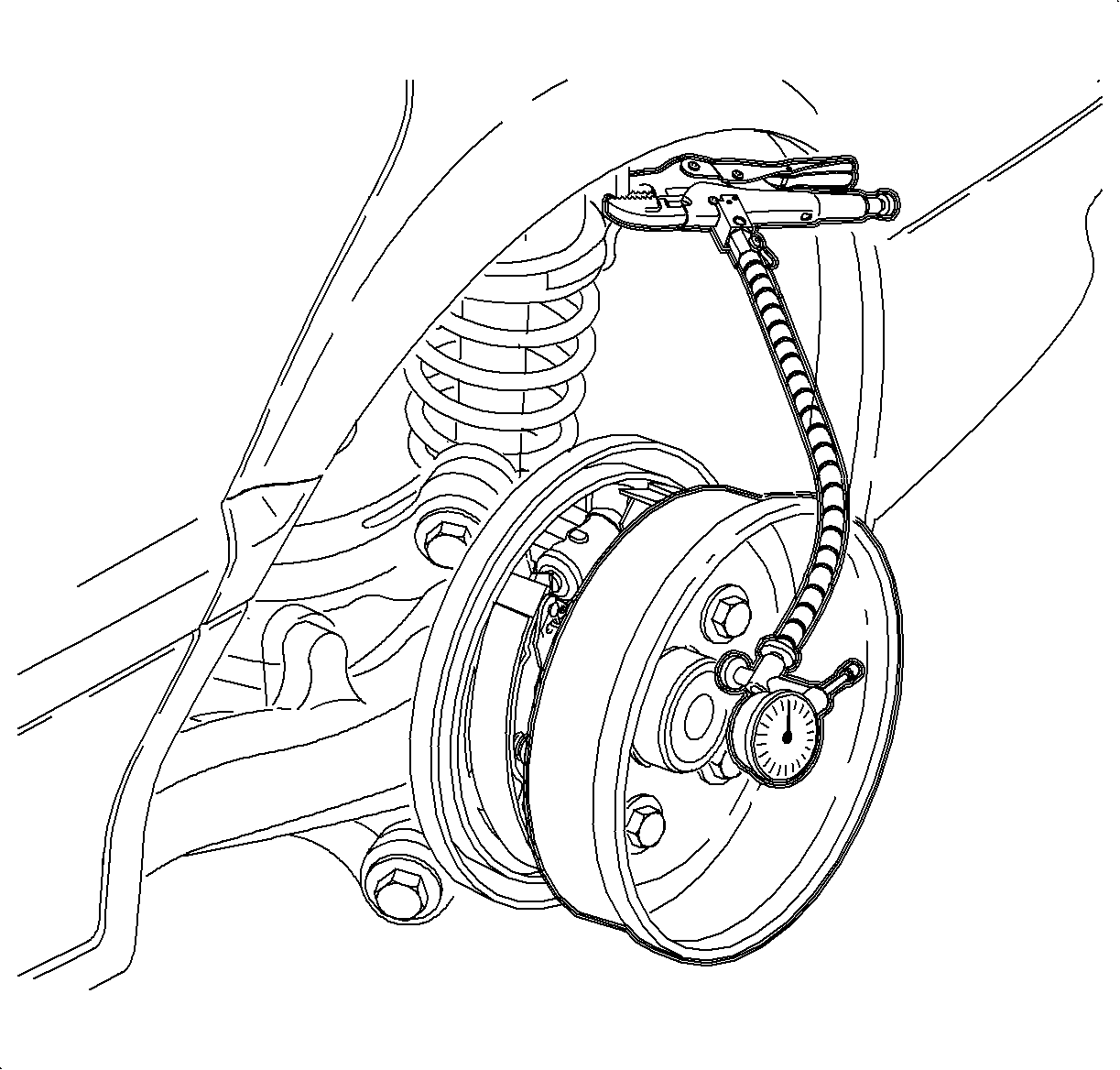For 1990-2009 cars only
- Remove the wheel.
- Remove the brake drum and install on the hub backwards; secure the drum with 2 wheel bolts.
- Fasten a dial indicator to the knuckle or the strut-to-knuckle fastener.
- Position the dial indicator tip against the brake drum shoe surface.
- Rotate the drum to the lowest reading.
- Zero the dial indicator.
- Rotate the drum one complete revolution and observe the total indicated runout (TIR).
- Move the dial indicator neck to allow removal of the drum. It is not necessary to remove the dial indicator from the knuckle or the strut-to-knuckle fastener.
- Remove the drum from the hub and turn 180 degrees and again, install on the hub backward. Secure the brake drum with 2 wheel bolts.
- Position the dial indicator tip against the brake drum shoe surface.
- Rotate the drum to the lowest reading.
- Zero the dial indicator.
- Rotate the drum one complete revolution and observe the total indicated runout (TIR).
- Remove the drum and install on a brake lathe.
- Fasten a dial indicator to the brake lathe.
- Position the dial indicator tip against the brake drum shoe surface.
- Rotate the drum to the lowest reading.
- Zero the dial indicator.
- Rotate the drum one complete revolution and observe the total indicated runout (TIR).
- Subtract the total indicated runout (TIR) measurement obtained in step 19 (brake drum runout) from the TIR measurement obtained in step 7 (combined brake drum and hub runout). The difference between these 2 readings represents the hub runout.

Important: Be sure the drum and the hub surfaces are free of debris and corrosion.
| • | If the combined brake drum and the hub radial runout does not exceed 0.10 mm (0.004 in), proceed to step 8. |
| • | If the combined drum and the hub radial runout exceeds 0.10 mm (0.004 in), proceed to step 14. |
Maximum TIR (combined brake drum and hub)
0.10 mm (0.004 in)
| • | If the combined brake drum and the hub radial runout does not exceed 0.28 mm (0.011 in), the brake drum and hub are within specification and no repair is required. |
| • | If the combined brake drum and hub radial runout exceeds 0.10 mm (0.004 in), proceed to step 14. |
Maximum TIR (combined brake drum and hub)
0.10 mm (0.004 in)
Maximum TIR (brake drum)
0.15 mm (0.006 in)
| • | If the brake drum radial runout exceeds 0.05 mm (0.002 in), refinish the brake drum as long as refinishing does not exceed the brake drum maximum diameter of 230.65 mm (9.08 in) after turning. |
| • | If the brake drum exceeds the maximum diameter, replace the brake drum. |
Combined Drum and Hub Runout - Drum Runout = Total Hub Runout
Maximum TIR (combined brake drum and hub)
0.10 mm (0.004 in)
If the hub runout exceeds 0.05 mm (0.002 in), replace the hub and the bearing assembly.
Brake Drum Radial Runout Check (Off-Vehicle)
- Remove the wheel.
- Remove the brake drum and install on a brake lathe.
- Fasten a dial indicator to the brake lathe.
- Position the dial indicator tip against the drum shoe surface.
- Rotate the drum to the lowest reading.
- Zero the dial indicator.
- Rotate the drum one complete revolution and observe the total indicated runout (TIR).
Brake Drums (Runout)
0.05 mm (0.002 in)
